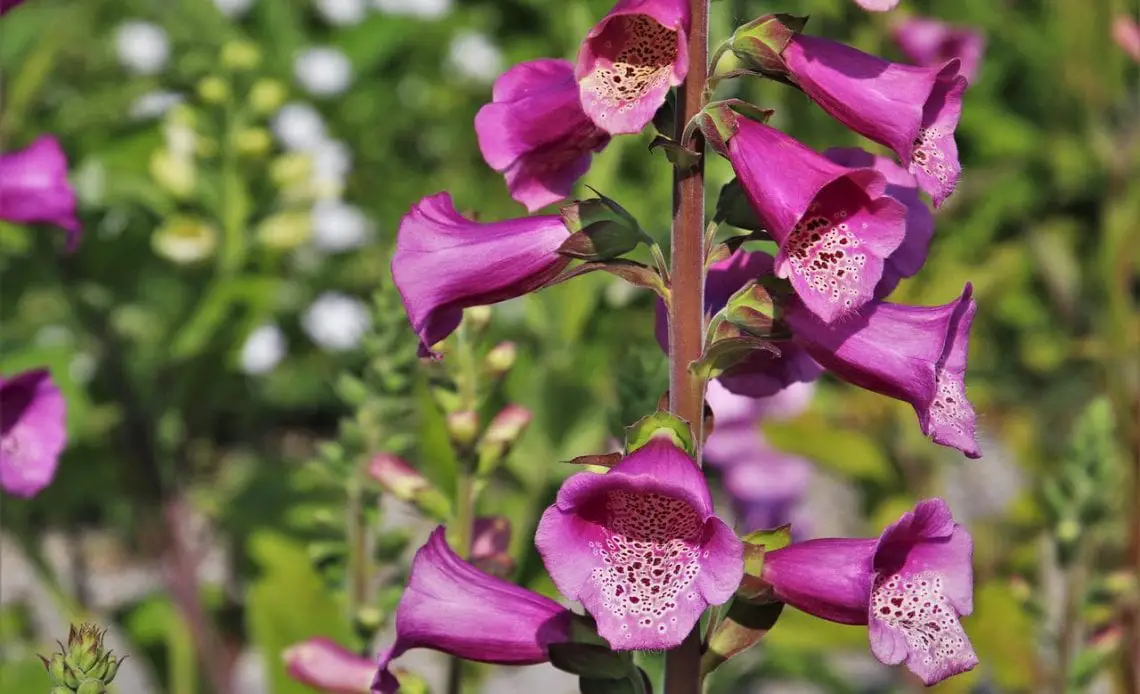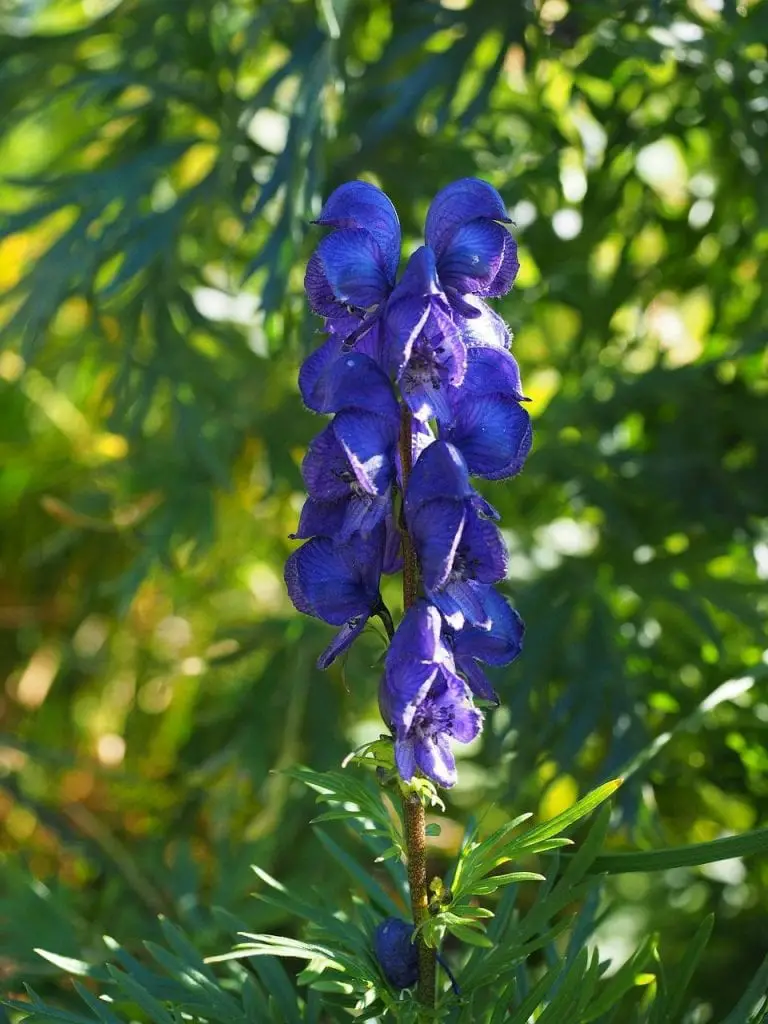
Pretty flowers make a garden look attractive. Most homeowners would love to have flowering plants in their gardens to enhance their overall attractiveness—the more colorful the flowers, the more attractive the garden. What many homeowners don’t know is that some of these pretty plants can have poisonous flowers. These flowering plants look good but are dangerous. If children, pets, or even adults eat the flowers or plant parts by mistake, it could be dangerous.
Plants with flowers that are poisonous
Many plants develop poisonous flowers as a self-defense mechanism. These plants develop toxic parts so that they are not eaten by animals. The plants are capable of producing toxins or chemicals that are poisonous. Generally, the plants that have very colorful or attractive flowers tend to more poisonous. This is again a natural mechanism of self-protection.
Some plants release toxins on contact with the skin. Others show their deadly effects when consumed. While some plants have caused mild allergies, others can be fatal and may even lead to death. Homeowners must be careful to avoid such plants, especially if they have pets or children in the house. The article lists out some of the plants that have poisonous flowers.
1. Foxglove
Foxglove or Digitalis has very attractive flowers. They are ornamental and a bouquet of these flowers look alluring. The flower of this plant and most other plants are poisonous. The foxglove plant contains an alkaloid called Digitalis. This is used to make medicine to treat heart problems. When ingested directly, the flower can cause nausea, vomiting, diarrhea, and may even lead to heart or kidney flower. The poisonous flowers and other parts of this plant are very dangerous.
2. Tulips
Tulips are one of the most popular flowering plants. They are perennial plants and the flowers of these plants are in demand. They can brighten your garden with the rich color of their flowers. The tulip is a poisonous plant with poison present in its bulbs. Tulipanin is an alkaloid present in low concentrations in the flowers and high concentrations in the bulbs. This substance can cause skin itching on contact. If ingested, it can cause diarrhea, vomiting, excess salivation, and weakness.
3. Lily of the Valley
Lily of the valley is one of the plants with poisonous flowers. The plant produces white flowers that are attractive. Apart from its appearance, it has a pleasant fragrance that makes it a delightful plant. Don’t be fooled by the looks because the entire plant is poisonous. This plant contains cardiac glycosides that can affect the heart. It can cause stomach ache, vomiting, vision problems, and can cause heart problems. It can be fatal if taken in large quantities.
4. Daffodil
The daffodil is a flowering plant about which poems have been written. The daffodil flowers form from the bulb, which is very poisonous. The bulb looks like an onion and accidental consumption can create a lot of problems. There are two substances in this flowering plant called scillitoxin and lycorine. They can cause irritation in the mouth, diarrhea, and convulsions. If the sap comes in contact with the skin, it can cause irritation in the skin and eyes. Homeowners need to think twice before planting this beautiful plant that is highly toxic.

5. Wolf’s Bane
Wolf’s bane or Monkshood is a plant with bright colored flowers. Aconitum is a plant commonly found in gardens. Many people don’t even know that it is poisonous. The entire flower is poisonous and eating any part of the plant can be dangerous. Pets and kids are likely to consume the flower or other parts. Doing so can cause vomiting, seizures, or convulsions. It can even affect the heart and cause death if the poisoning is not treated on time. The poison may enter the skin if the plant sap comes in touch with cut skin or an open wound. This is a plant to avoid in homes.
6. Hydrangea
Hydrangeas are one of the most colorful flowering plants. The plants offer flowers of many colors. Since this is a perennial plant, it a favorite for all gardens. This is yet another colorful flowering plant that is poisonous. The flowers of this plant are poisonous, as is the bark, buds, and leaves. Accidentals ingestion can be harmful. It contains a glycoside called hydrangin. This can cause symptoms like stomach ache, diarrhea, vomiting, breathing problems, and fever. Compared to some other plants the toxicity levels are much lesser.
7. Baby’s breath
The flowers of this plant are likely to be used in flower bouquets. The plants belonging to the Gypsophila genus produce small white flowers. Some species provide pinkish flowers. The attraction of the flowers makes this plant popular among gardeners. It is a poisonous plant but fortunately, the poison levels are lesser. However, the flowers and other parts have an alkaloid called gyposenin. People with allergies can experience problems if exposed to this plant. It can irritate the sinus cavities and can severe breathing problems. It can also cause dermatitis. Pets can face stomach upset if they ingest the baby’s breath flowers.
8. Castor plant
The castor oil plant is a popular plant found in gardens. The oil of this plant is commercially valuable. The plant is also used as an ornamental plant, thanks to the attractive flowers. The flowers are attractive, as are the leaves of the plant. This is another plant that is extremely poisonous, and most people are not aware of it. The plant is considered one of the most poisonous plants found in gardens. While the leaves and flowers may cause poisoning, the seeds are extremely toxin. They release an alkaloid called ricin that can cause diarrhea with bleeding, fall in blood pressure, severe nausea, seizures, and increased heartbeat.
9. Hemlock
The hemlock plant is one of the most poisonous plants in the world. It has been used as a poison for ages. The Greek philosopher Socrates is one of the most famous victims of hemlock poisoning. Hemlock is a plant found in most gardens because of its small and attractive flowers. There are variants of the hemlock, which people grow thinking it is safe. One is water hemlock or Cicuta. This is also poisonous and causes sweating, stomach upset, convulsions, and hypoxia.
10. Morning glory
As the name suggests, these flowering plants are glorious to look at when they bloom. The pink-color flowers make it a favorite of gardeners and homeowners. There are varieties of this plant, some with blue flowers and the other purple. This is yet another plant with poisonous flowers. The plant seeds are toxic. It causes effects similar to that of LSD. Consuming the seeds can cause hallucinations. In larger doses, it can lead to liver failure. This is a plant you should avoid if you have pets and children frequenting the garden.
11. Clematis
Clematis is known as the leather flower because of the texture of the plant’s flower. The flowers are extremely striking in color. This can make it the pride of a garden. This is why this flowering plant is popular. The plant is poisonous and can pose risks to people and animals. The flowers, leaves, and other parts contain a glycoside known as ranunculin. This causes symptoms like irritation in the mouth, salivation, and diarrhea. Fortunately, the toxicity is low and unlikely to cause serious problems.
12. Peruvian Lily
The Peruvian lily is called the Lily of the Incas. It produces brightly colored flowers that are a visual delight. The flowers depend on the species planted and can be red, purple, pink, or white. It is a popular houseplant that is used to make the garden look more attractive. Most people are not aware that this plant is toxic. They have glycosides that can be harmful to humans and animals. Contact with the plant parts can cause skin itching and other symptoms. It can lead to blisters, eye irritation, and other problems.
13. Oleander
The Oleander is a popular flowering plant found in gardens. The pinkish flowers are attractive, which is why they are grown. This is another plant where all the parts are poisonous. The toxins in this plant can affect pets and humans. Accidental consumption can cause vomiting, seizures, and may even cause death.
14. Rhododendron
The rhododendron is one of the most popular shrubs that are found in gardens. The violet color flowers of this plant enhance the appearance of a garden. This plant contains a toxin known as grayanotoxin. It can cause stomach pain, diarrhea, weakness and may even lead to paralysis in the leg or a fall in heart rate.
The article on plants with poisonous flowers listed out some of the most popular flowering plants that are toxic. Most people are not aware of the toxic nature of these plants. Since they look attractive, they are commonly found in gardens. If your garden is not accessible to pets, livestock, and children, you can keep these plants. However, if children or pets are likely to consume the flowers or other parts, then it is best you avoid these plants.
